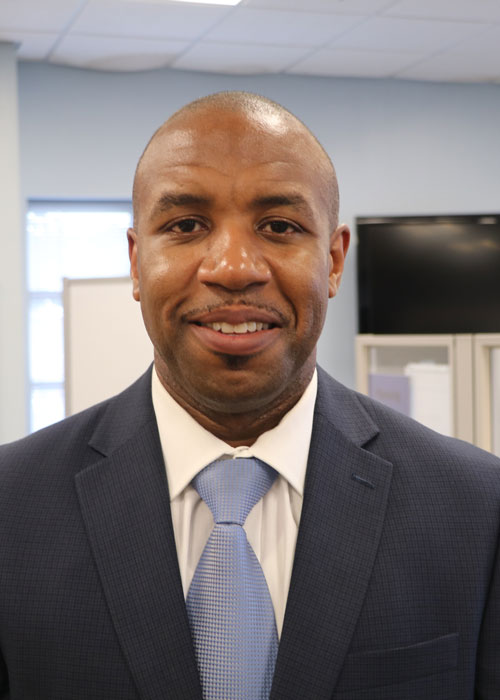Emergency Management Policy takes effect
By connecting and codifying existing campus emergency plans and programs, the policy helps the University community better prepare for the unexpected.

The University launched a new Emergency Management Policy on July 1. Darrell Jeter, Carolina’s director of emergency management and planning, explains the new policy and how it builds on existing campus emergency plans and programs.

Darrell Jeter
What is the mission of the Emergency Management Policy?
To ensure that, as a campus, we’re prepared for the unexpected. We want to make sure we can effectively respond to and recover from disruptions. The ultimate goal is minimizing short- and long-term effects of those disruptions to the mission of the institution so that we can get back to teaching, research and public service as quickly as possible.
Is this new policy a response to any particular situation or threat?
No. Being America’s oldest public university, we felt it was important that we have documented standards to codify what we have already been doing in terms of emergency planning and response. That said, recent events, including a global pandemic, hurricanes and active shooter situations, have certainly informed how we approach the coordination and content of the policy.
Say more about existing emergency management at Carolina and what this new policy adds?
We have programs and concepts in place — Alert Carolina protocols, emergency action plans, a hazard mitigation plan and more — but there was nothing that connected all of them together. This policy connects and codifies all of those.
This policy creates standards that allow for a more scalable, repeatable and sustainable approach to managing campus emergencies. Organizations experience institutional knowledge loss when someone leaves a position. Having a documented policy creates standards so that regardless of who occupies a position, the standards are set. The expectations are there. It serves as the official overarching policy issued from the chancellor that basically says we’re going to have a coordinated effort and a standard approach to our management of incident response and recovery for our campus.
Our office, emergency management and planning, has the administrative responsibility to facilitate the development and maintenance of those emergency plans and programs. But when we have to execute a response, this new policy will help our University community move from a day-to-day, somewhat decentralized approach to doing our duties to a more consolidated organizational structure.
And, finally, if we have to rely on local, state, federal or even private resources during an emergency or disaster, this policy will help integrate those resources into our process.
“As a university community, we must always be prepared for the dangers and disruptions of our world today so that we can keep one another safe. This policy establishes proactive standards for our emergency planning and response, and I am grateful to all the stakeholders who gave their expertise.”
— Chancellor Kevin M. Guskiewicz
Does this policy specify types of emergencies?
It does. National standards help us type and define incidents. Not every event is severe enough to cause a pause in operations. We call those low-level, or type 5 and type 4 incidents. It could be a vehicle accident, a fire inside of a room in a building, a small flood in a local area, a small utility outage.
This policy and the execution of it would apply to type 3, 2 and 1 incidents — situations where it is unsafe for us to continue either a part of or the majority of our normal campus operations. We may need to suspend class instruction or suspend non-mandatory operations. Winter weather is an example of those. We can’t get people to campus. It’s not safe to do so. In that case, we may need to implement this policy so that we can execute the emergency coordination and return to normal as quickly as possible.
What can faculty, staff and students do to be better prepared?
We have a threefold message: Be informed. Be prepared. Take action. That is the mantra of our Carolina Ready campus preparedness campaign. Campus preparedness begins with individual preparation. Do you know what you will do in the event of a disruption? We have a web page with information on what people can do individually within their building, in classrooms and even off campus. We have some training resources on there. We can come to a department or a student group to train them on particular topics of interest. People should register for Alert Carolina text notifications so they can take immediate steps to protect themselves and others if we have a disruption on our campus. The key difference on the response side is between one who has trained on what to do versus one who has not trained. And that’s the difference between panic and effectively responding to an incident.
“The enactment of this Emergency Management Policy is truly a milestone for the University. The University has successfully managed unforeseen situations over the entire course of its existence, but this policy, which we, under Darrell Jeter’s leadership, built thoughtfully over the last year, will help us navigate those instances more efficiently and effectively.”
— Vice Chancellor for Institutional Integrity and Risk Management George E. Battle III
When did you begin work on the policy, and what did that work involve?
Officially, work began on it in May of 2021. We began by researching best practices around an emergency management policy. We received help from a couple of interns, both policy majors here at Carolina. They helped produce a document with findings and recommendations. They did some benchmark studies looking at other institutions across the nation, and that gave us a framework upon which we could build and develop a policy that made sense.
As far as standards, we relied in part on federal law — the Robert T. Stafford Disaster Relief and Emergency Assistance Act — as well as the North Carolina Emergency Management Act and the Emergency Management Accreditation Program. The standards and the guidance from those policies, statutes and best practices also informed key content that we needed to include so that we remain consistent with our partners at the local, state and federal level, in case we must rely on them for assistance during times of crisis.
We worked directly with Carolina’s Office of Ethics and Policy. They helped us draft a policy that was in line with the University standard for policies.
Along the way, we spoke to key stakeholders, including leaders from Student Affairs, the Office of the Provost, the Office of Human Resources and University Communications, just to name a few. We got their input and then met with the chancellor’s office to finalize the policy.
Any final thoughts?
I represent the Office of Emergency Management Planning, but it’s important to note that when we talk about emergency management and this new Emergency Management Policy, we’re not talking about an office. We’re not talking about staff on the administrative side. We are talking about a system. How do we protect our most precious resources — our people — from the impact of disruptions to our campus? All of us have a role in this emergency management system. All of us are contributors. The success of this policy is going to require all of us to continue to do what we have been doing — making sure that we are individually prepared when something does occur and then looking out for one another.




